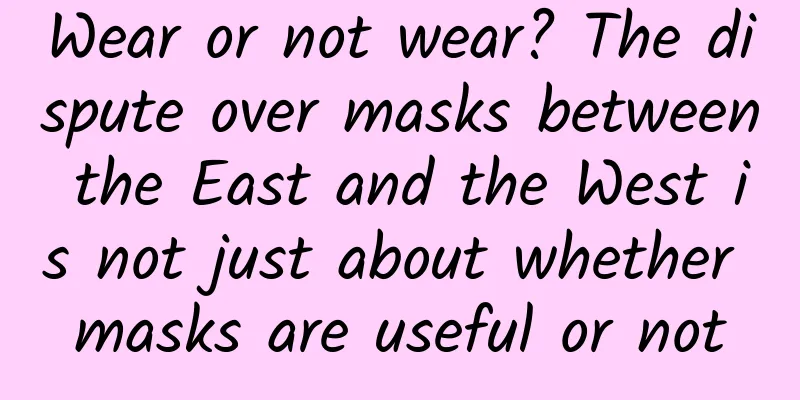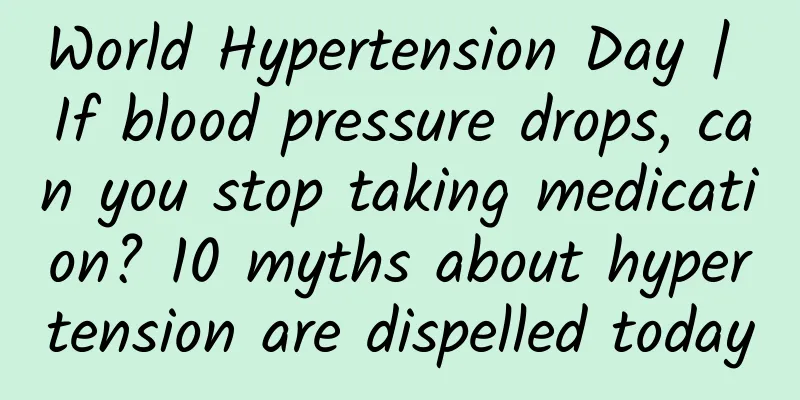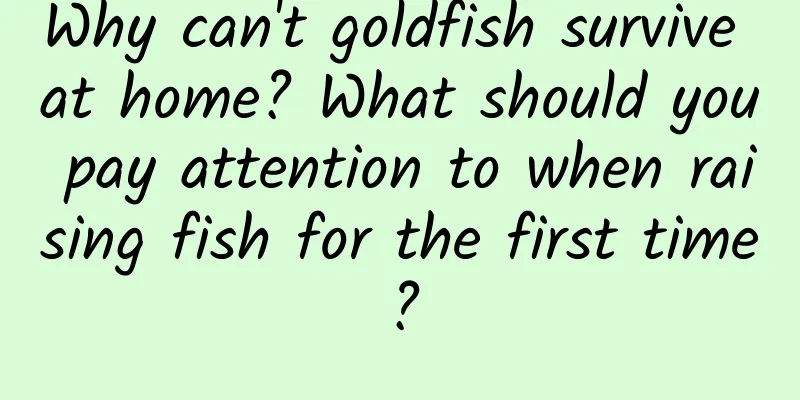Wear or not wear? The dispute over masks between the East and the West is not just about whether masks are useful or not

|
The COVID-19 pandemic is spreading around the world. Since British Prime Minister Boris Johnson advised residents to reduce unnecessary outings and work from home as much as possible in mid-March, Jiaying, a Beijing girl living in London, has hardly left her house. Before that, she wore a mask and took the subway to and from home every day, even though "almost no one wore a mask on the London subway." In order to avoid the morning rush hour, Jiaying left home half an hour earlier than usual, and wiped all the office supplies and personal belongings on the table with alcohol before her colleagues arrived. But as soon as she entered the office building, Jiaying took off her mask, "No one in the office wears a mask, not even one." Jiaying's workstation is next to the aisle, and people often walk back and forth, which makes Jiaying feel nervous. On the weekend, Jiaying went out to buy daily necessities fully armed with an N95 mask and goggles. "A white lady stared at me for ten seconds, but I didn't care. Being laughed at is better than getting sick." In Jiaying's common sense, wearing a mask provides a layer of protection, which is better than having nothing at all. Jiaying went out fully armed with goggles and a mask | Provided by Jiaying What makes Jiaying even more worried is her boyfriend. Jiaying's boyfriend is a Polish barista who works in a cafe in downtown London. Before the complete shutdown, the owner of the shop did not allow employees to wear masks during work hours because "it would scare away customers and make them feel uncomfortable." Jiaying tried to write a letter to the owner of the coffee shop, but she felt that her words were not convincing enough, "Some deep-rooted things are difficult to change..." What is "deeply rooted"? Whether masks are useful in preventing the new coronavirus and how effective they are has not yet been determined. However, effectiveness is not the only factor that affects people's attitudes and views on wearing masks in different countries and regions. The history of prevention and control of infectious diseases in different countries and regions, people's cognition of diseases, different social cultures and social etiquette, etc., all seem to be wrapped in this thin layer of fabric. Masks in history When did people first start using masks? We cannot determine the exact time. In 1887, German microbiologist Frueger proposed that the germ-laden saliva of medical staff when speaking could cause infection in patients' wounds. On this basis, German pathologist Ledecky suggested in the same year that medical staff should wear a mask made of gauze that covers the mouth and nose during surgery - this is the earliest record of medical masks in the modern sense. Similar gauze masks also appeared in China at the beginning of the last century. In the autumn of 1910, a plague broke out in Northeast my country. Wu Lien-teh, a Chinese doctor who served as the "Chief Medical Officer for Epidemic Prevention in the Three Eastern Provinces", speculated that the plague could be transmitted through droplets and invented a simple mask made of two layers of gauze. All medical staff, patients and their direct contacts were required to wear masks, and areas with severe epidemics would also force ordinary people to wear masks. Figure: The Great Northeastern Epidemic of 1910-1911 and the Government's and the Government's Response Measures In 1918, the Spanish Flu ravaged the world, infecting about 500 million people and killing about 50 million people. When searching for photos of the Spanish Flu period on the Internet, masks are one of the symbols that cannot be ignored. At that time, some public health experts in the United States recommended that everyone wear masks. Cities such as San Francisco and San Diego issued "Mask Orders" requiring healthy ordinary citizens to wear masks in public places. Violators will be fined or imprisoned. European countries such as the United Kingdom have also taken similar measures. From the photos, we can see that not only medical staff and patients, but also police officers, drivers, and pedestrians on duty on the street, almost everyone wears a white gauze mask on their face. People wearing masks on the streets of New York during the Spanish Flu of 1918 | University of Washington Libraries, Special Collections When the Spanish flu spread to Japan, the Japanese government also began to vigorously promote the use of masks by the public. Japan's two largest newspapers, Asahi Shimbun and Yomiuri Shimbun, reported on the "mask order" in the United States and published photos of people wearing masks on the streets of New York, promoting this "mask that can prevent influenza" to the Japanese public. Police, audiences entering and leaving cinemas and theaters, and passengers on public transportation were required to wear masks; retailers and manufacturers stepped up production to meet the huge demand for masks across the country, and some schools purchased raw materials and organized students to make masks themselves. Historians believe that the production and use of masks became a major national event during the Spanish flu in Japan. Female students wearing masks in Tokyo in 1919 | Mainichi Shimbun As the Spanish flu epidemic was brought under control worldwide, people around the world gradually reduced the use of masks, especially in most Western countries. However, in some Asian countries, especially Japan, the habit of ordinary people wearing masks was retained after the epidemic ended in 1918 and has been "developed" over the past 100 years. Accepted and rejected Mitsutoshi Horii, a sociology professor at Hideaki University in Japan, specializes in the development of masks in Japan. He told Guokr that before medical masks were introduced to Japan, the Japanese people's way of dealing with influenza was mostly "superstitious treatments", such as spells. In Professor Horii's view, the reason why the Japanese government vigorously promoted masks during the Spanish flu was to reduce the impact of these "superstitious treatments" on the people, so that the country could quickly enter modernization - masks represented advanced Western medicine at the time, and wearing masks meant that Japan was a modern and scientific country. Similarly, some domestic scholars believe that Wu Lien-teh vigorously promoted the use of masks during the plague, allowing advanced foreign epidemic prevention concepts to penetrate into personal life, thereby increasing the people in the Northeast region's acceptance of Western medicine and promoting the spread of Western scientific concepts in the region. The mask invented by Wu Lien-teh | The Great Northeastern Plague of 1910-1911 and the Establishment of Harbin's Public Health System Unlike the situation in China, after the Spanish flu epidemic ended, the Japanese government did not reduce its propaganda on the importance of wearing masks in public. A series of anti-flu posters released by the public health department depicted how invisible flu germs were resisted by masks. According to the Japanese folk classification of clean and dirty, the outside is always dirty and the inside is always clean. Professor Horii explained that although there is no scientific basis, in people's imagination, the air outside is full of bacteria, and densely populated public places are dirty, and masks can effectively isolate these foreign "dirty things". A government poster from the Taisho era (1912-1926) urges the public to wear masks | the national institute of public health of Japan/via KYODO The government's vigorous promotion has undoubtedly increased the Japanese people's acceptance of masks. A survey report in Fukui Prefecture in 1920 showed that about 80% of local households were using masks. In the 1930s and 1940s, in addition to people who coughed and sneezed being advised to wear masks to prevent infecting others, the government also emphasized that healthy people should wear masks to protect themselves. However, in European and American countries, masks are not so "popular". During the Spanish flu, although "wearing masks in public" was written into law in some American cities, this decree also encountered considerable resistance. In Tucson, Arizona in the south, although the police arrested and fined many unruly citizens, people still took off their masks when the police were not paying attention. The public questioned the effectiveness of masks in fighting the flu, believing that this measure was just imitating and copying the practices of big cities such as San Francisco. Faced with pressure from the public and public opinion, the government terminated the "mask order" (partly because the epidemic was under control and the number of cases decreased). Professor Horii believes: "In the West, especially in the United States, people do not like to be 'forced' to wear masks, and many people feel that their freedom as citizens has been violated." At the same time, Professor Horii also emphasized that compared to wearing masks, hand washing and vaccination are the mainstream practices for preventing influenza in European and American countries. Starting in the 1960s, influenza vaccines began to be promoted on a large scale in Japan, and anti-flu masks gradually lost their original status. But at the same time, masks found a new position in Japanese society - preventing and treating hay fever (also known as allergic rhinitis). Spring is the season with the highest incidence of hay fever, and Japanese people all wear masks丨qdaily.com Since the first case was discovered in 1963, hay fever has become a "national disease" in Japan. Data from 2006 showed that the number of hay fever patients in Tokyo was as high as 28.2%. Doctors' advice on gargling, washing eyes and taking medicine has little effect on many patients. 80% of patients will take "self-protection" measures, including wearing masks. Professor Horii now lives in the UK. In his comparison, on the one hand, Japanese medicines are relatively not as large in dosage as those in Europe and the United States, and the effect is not good enough. On the other hand, the Japanese people are afraid of the side effects of Western medicine. After weighing the pros and cons, masks are cheap, effective and have no side effects. It is natural that they are so popular in Japan. Although there are relatively few people suffering from hay fever in China, another factor has "bound" masks to daily life. That is air pollution. Back in the days when life was not disrupted by infectious diseases, masks were already everywhere in convenience stores in cities such as Beijing, especially masks that protect against PM2.5. Many people must have had this experience: when the haze is serious, the air has a "strange smell"; it is not uncommon to see rows of masks on the subway. A man wearing a mask riding a bicycle on the streets of London丨LUKE MACGREGOR/REUTERS When Professor Horii visited London a few months ago, he was surprised to see a man wearing a mask on the subway because it was so rare. "The people most likely to wear masks in London are cyclists on the street, who are particularly concerned about air pollution. But other than that, it's really rare to see people wearing masks." Face is important Sereine, who was born in Plymouth, works as an HR in a London company. She has been working from home for almost a month since the British Prime Minister ordered residents to reduce unnecessary outings in March. Sereine lives in an apartment on the outskirts of London with her pet, a hamster named Shay. She has not bought a mask, has not thought about buying a mask, and does not know where to buy a mask. "I may need to check online. I don't know if it is sold in ordinary pharmacies. I have never tried to buy a mask. This thing does not exist in my life," said Sereine. In Sereine’s 27 years of life experience, she only remembers that her father wore an industrial mask when he was doing carpentry work at home when she was a child, and that her Japanese classmate Yumi wore a mask when she was sick in college. “Yumi told me that she was sick and didn’t want to infect others.” Before starting to work from home, the topic of Sereine’s daily chats with her colleagues always revolved around the COVID-19 pandemic, but no one in the office wore a mask. “If someone wore one, they would definitely be laughed at.” Professor Horii believes that covering the face in daily social interactions is not part of Western culture. He mentioned that many European countries have "mask bans" due to religious extremism and other issues. For example, the "Anti-Mask Law" promulgated by France in 2010 stipulates that no material can be used to cover the face in public. British Ambassador to China Barbara Woodward also mentioned this in a conversation with Guokr. The ambassador said that apart from religious reasons, the only people who cover their faces in daily life are usually medical staff wearing masks, while most other people are used to showing their entire faces in normal social interactions to show respect. Some people even think that wearing sunglasses during face-to-face communication is not polite because you can't see people's eyes. The face, or more specifically, facial expressions and eye contact are undoubtedly crucial in face-to-face social interactions. In the view of sociologists, facial coverings such as sunglasses are like an "intervention shield" that blocks normal communication between people. Masks and headphones also have similar functions. In Japan, in addition to climate and disease reasons, many women wear masks to avoid being harassed in public. Some cross-cultural studies have found that Western Europeans generally have a positive attitude towards eye contact, but people with an East Asian cultural background may not think so. In fact, in Japanese culture, people are taught not to have too much eye contact with others, and looking directly into someone's eyes is a sign of disrespect. Professor Horii said that in Japan, people who go for job interviews will be advised not to look directly into the interviewer's eyes, but at the neck. "In this way, you are still looking at the person in front of you, but not as directly, and it doesn't feel so rude." Professor Horii believes that the high acceptance of masks among Japanese people is partly related to the culture of "not looking directly at the face", but "face" is not unimportant in Japanese culture. Some Japanese women wear masks because they don't want people to see their faces without makeup. This kind of lookism is also very common in other East Asian countries. More and more girls in South Korea and China are accustomed to wearing masks to cover up their facial flaws. Professor Horii said, "In this case, it is precisely because the face is too important that it needs to be presented in the most correct way." Masks are becoming more common It seems difficult to give a definite answer as to why people wear masks, or why they don’t. Professor Horii mentioned in his research that wearing masks was originally a collective, targeted behavior to combat public health crises, but in the past 100 years in Japan, it has gradually evolved into a personalized behavior without a clear purpose and strict regulations - wearing masks when you are sick, wearing masks when you are afraid of getting sick, wearing masks when the weather is cold, wearing masks when the air quality is bad, wearing masks when you don’t wear makeup, wearing masks when you don’t want to talk to people, etc. In the absence of a sense of security in the external environment, wearing masks has become a common way of self-protection. When a real crisis strikes, such as the COVID-19, people in East Asia naturally accept masks as a shield against the virus. Professor Horii explained that the uncertainty and lack of security when a disaster strikes will prompt people to take immediate measures, and the measures people take usually come from their past life experiences, or what they are familiar with. SARS in 2003, avian influenza in 2004, and MERS in 2015, due to fear of infectious diseases, the acceptance of masks in East Asia has become increasingly higher. Masks are not such a familiar existence for Westerners. In recent years, the West has not seen a pandemic as influential as SARS. The most recent one was the Spanish flu a hundred years ago. (Although the H1N1 swine flu broke out in the United States in 2009, its mortality rate was much lower than the above infectious diseases.) The mortality rate of the 2009 H1N1 swine flu was much lower than that of the Spanish flu, SARS, etc.丨nytimes.com Sereine said that the oldest elder in her family also had no memory of the Spanish flu. "My parents didn't experience it, and neither did my grandparents. I don't think we can say 'how did we deal with it last time.'" Ambassador Woodward mentioned in the interview that for the new crown pneumonia, the British government has emphasized more on the prevention measures of washing hands frequently, staying at home and maintaining a social distance of two meters. Now some people choose to wear masks. "In the face of the current epidemic, culture, nationality, race, gender or any other factors are not important. What is important is that we as human beings must unite and work together to find a cure for the disease." The ambassador said. Whether it is wearing a mask or washing hands frequently, in the face of a real crisis, these individual behaviors in daily life are transformed into a collective and targeted way to fight the crisis. Sociologist Peter Baehr studied the role of masks during the SARS outbreak in Hong Kong, China in 2003. In his article, he wrote that in this city shrouded in masks, people's identities are blurred by masks, and even friends and colleagues passing by are difficult to recognize immediately. But in such a situation, people's collective identity is highlighted, resulting in a sense of a community of shared destiny of "sharing the same breath and suffering together" - masks symbolize a code of conduct and a social responsibility, and have quickly become a social ritual driven by the epidemic. Therefore, in the face of the epidemic, the role of masks is not just as simple as preventing diseases. People transform their anxiety and uneasiness about reality into daily behaviors such as wearing masks, washing hands frequently, and maintaining a social distance of two meters. Wearing masks helps us restore stability in our daily lives. The American media once described masks as "comfort blankets", although for many people, masks are not as comfortable as blankets. After wearing them for a long time, my ears are a little painful, and my breathing becomes heavier and I occasionally feel out of breath. I need to communicate with people very loudly or I can't hear clearly, and we don't know how long this situation will last. But we still choose to continue wearing masks. Professor Horii said: "In such a situation, people do something together to get through this difficult time together. I think this is the great thing about human society." References: [1] Ridaura VK, et al. Gut microbiota from twins discordant for obesity modulate metabolism in mice. Sciene, 2013 Sep 6;341(6150) [2] Patnode ML, et al. Interspecies Competition Impacts Targeted Manipulation of Human Gut Bacteria by Fiber-Derived Glycans. Cell. 2019 Sep 19;179(1):59-73 Author: Edan Editor: Xuezhu This article comes from Guokr and may not be reproduced without permission. If necessary, please contact [email protected] |
<<: The breakup rate of couples has increased sharply. Is it related to the closure of cinemas?
Recommend
Is it normal to have amenorrhea for a month occasionally?
Women often suffer from menstrual disorders. Many...
If you do this, kidney cancer will not be scary!
Author: Yang Yong, Chief Physician, Peking Univer...
What to do if you have a fever during 7 months of pregnancy
Many people in their lives are always unable to f...
Is it true that you won’t gain weight by eating during menstruation?
Many women believe that they will not gain weight...
The harm of chloasma, how to prevent chloasma in winter and spring
Chloasma actually has a great impact on our lives...
What does a gynecological biopsy mean?
A cervical biopsy is a simple test of a woman'...
Reasons for delayed menstrual period
The arrival of menstruation indicates that women ...
Potted plants suitable for pregnant women
If there is a pregnant woman at home, you can cho...
Female lower abdominal pain after defecation
Many people have diarrhea because of pain in the ...
What is the reason for the yellow-green tofu residue secretion?
As we all know, women often have some secretions ...
What to do if you have anemia during your third month of pregnancy
If you find yourself anemic when you are three mo...
Why does vaginal pain occur when sitting?
Under normal circumstances, women's vaginas d...
The size of the gestational sac at 40 days determines the gender of the baby
After pregnancy, a gestational sac will appear be...
Qingbi Tang: Spring allergic rhinitis is coming strongly, Qingbi Tang teaches you the correct way to care for rhinitis!
Spring is the peak season for rhinitis! The tempe...
Can I still get pregnant after having an IUD inserted?
Some couples do not plan to have more children af...









